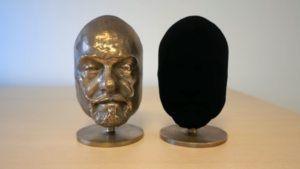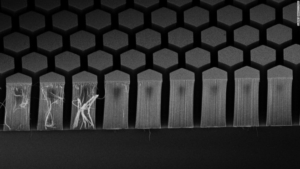
Vantablack is an absorptive coating consisting of a forest of aligned, high aspect ratio carbon nanotubes. Recognized as the darkest substance that the human race has ever created, it is reported to be capable of absorbing 99.96 percent of the visible spectrum due to its unique physical and optical properties. Vantablack may very well be the closest thing to a black hole that humans beings will ever see with their naked eye.
By coating a three-dimensional object with Vantablack, the human brain inadvertently perceives the object as two dimensional when perceived at a certain angle. Due to the lack of colour and reflection, the act of discerning the features of an object is nearly impossible.
Developed by Surrey NanoSystems, its exceptional properties such as, but not limited to, being hydrophobic, impervious to outgassing, thermal shock resistant, vibration resistant, and extremely lightweight, has made Vantablack highly applicable for space environments.
The surface area of 1 cm2 of Vantablack is made up of 1,000 million carbon nanotubes all spaced perfectly apart, with the diameter of a single nanotube measuring around 20 nanometres (3,500 times smaller than the diameter of the average human hair), and roughly 14 microns to 50 microns in height.

There are two versions of Vantablack available, where Vantablack 1.0 is grown directly onto a surface of an object inside of a chemical vapour deposition chamber using vacuum-deposition technology, while Vantablack S-VIS is sprayed on and post-processed. Unfortunately, only verified companies, research facilities and educational establishments will be able to have access to Vantablack while private individuals will not be supplied.

To learn more about Vantablack, click the link below.





